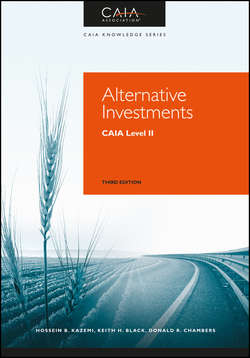Читать книгу Alternative Investments - Black Keith H. - Страница 68
На сайте Литреса книга снята с продажи.
Part 1
Asset Allocation and Institutional Investors
CHAPTER 3
The Endowment Model
3.2 Intergenerational Equity, Inflation, and Spending Challenges
ОглавлениеJames Tobin stated that the key task in managing an endowment is to preserve equity among generations. The investment goal of an endowment manager should be to maintain intergenerational equity, balancing the need for spending on the current generation of beneficiaries with the goal of maintaining a perpetual pool of assets that can fund the operations of the organization to benefit future generations. Stated quantitatively, intergenerational equity may be expressed by a 50 % probability of maintaining the real, or inflation-adjusted, value of the endowment in perpetuity. When the probability of the endowment surviving perpetually is low, such as 25 %, the current generation has an advantage due to the high spending rate of the endowment. Conversely, a high probability of perpetuity, such as 75 %, gives an advantage to future generations, as the endowment would likely survive indefinitely even if the current rate of spending were increased.
The challenge of the endowment manager is to maintain the long-term, inflation-adjusted value of the endowment's corpus, or principal value. The value of the endowment is constantly changing: growing with gifts, falling with spending to fund the organization's mission, and changing with the net returns to the investment portfolio. External forces can also impact the assets and spending of an institution, as gifts, research grants, and governmental funding may change substantially from one year to the next:
In fiscal year 2014, NACUBO estimated that the average endowment spent 4.4 % of assets, with endowments having assets either above $1 billion or below $25 million spending at an average rate of 4.6 %. Although endowment spending funded 10.5 % of the budget of the average university, 35 % of the budgets of Harvard and Yale were recently funded by endowment spending. In contrast to endowments, which typically have flexibility in their spending rate (which is the fraction of asset value spent each year), U.S. law requires that foundations spend a minimum of 5 % per year on operating expenses and charitable activities. Should charitable contributions received by endowments and foundations decline during times of weak investment returns or rising inflation, the real value of an endowment can fall substantially in a short period of time. Given that foundations have a minimum spending requirement of 5 %, while endowments have flexibility in their spending rate, it is easier for endowments to operate in perpetuity than it is for foundations to do so. This is because endowments can reduce their spending rate below 5 % of the endowment value during times of crisis.
EXHIBIT 3.4 Returns of North American University Endowments
Source: Bloomberg, 2014 NACUBO-Commonfund Study of Endowments.
For an endowment or a foundation to last in perpetuity and provide grants of growing value to its beneficiaries, the returns to its portfolio must exceed the rate of inflation by a wide margin. Exhibit 3.4 shows that the Consumer Price Index (CPI) measure of inflation rose by an annual average of 2.3 % in the 10 years ending June 2014. (As of January 2015, the CPI was weighted 32.7 % on housing prices, 12.4 % on medical and educational expenditures, 22.3 % on commodities, and 32.6 % on other goods and services.) During the same 10-year period, the Higher Education Price Index (HEPI), a measure of price inflation most relevant to U.S. colleges and universities, rose by an annual average of 3.3 %. Salaries of faculty and administrators make up the largest percentage of HEPI at 45.8 %; clerical and service employee salaries are weighted at 26.6 %; fringe benefits make up 13.1 %; and services, supplies, and utilities make up approximately 14.6 %. The rate of inflation as measured by HEPI is typically higher than that measured by CPI.
In order to maintain the real value of assets into perpetuity, as well as to meet a payout ratio, a foundation needs to achieve a return target. A return target is a level of performance deemed necessary to satisfy the goals of the owners or beneficiaries of the associated assets. A foundation that has a spending rate of 5 %, does not have any regular gift income, and wishes to preserve the real value of its assets has an aggressive return target: the rate of inflation plus 5 %, or even higher when the foundation's spending rate exceeds 5 %. When measured relative to CPI inflation over the prior 10 years, this return target is 7.3 %, a rate higher than the returns to a blended stock and bond portfolio over the same period. Return targets are even higher when the institution faces a higher inflation rate, such as HEPI, but lower when there is a substantial and regular flow of donations to the organization. For institutions without substantial gifts, endowment values likely declined in real terms over the previous decade due to investment returns that fell short of the targeted return of inflation plus 5 %.
David Swensen, the chief investment officer of Yale University and author of Pioneering Portfolio Management (2009), challenges endowment managers to resist the temptation to increase spending rates after periods of extremely high returns. He argues that limiting spending will allow an endowment to better survive cyclical drawdowns and better compound wealth in perpetuity.
